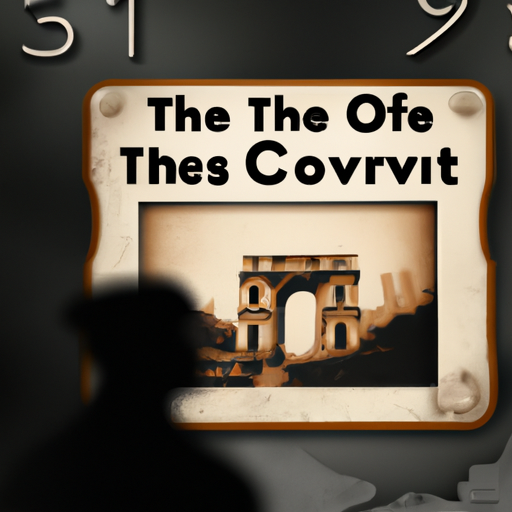A Brief History of the Begging the Question Logical Fallacy
begging the question

From its beginnings in ancient Greece to its modern usage, the concept of begging the question has been a perplexing part of discourse throughout history. Petitio principii—literally meaning “assuming the initial point”—was first used as a rhetorical device by rhetoricians and philosophers to make their arguments appear more convincing. Its popularity surged during the Middle Ages, when it became a common tool for philosophical debates. Eventually, it was adopted into English legal discourse in the 16th century and popularized by John Locke in his Essay Concerning Human Understanding (1690).
Fast-forward to today: Begging the question is now seen as an informal fallacy wherein someone assumes that what they are trying to prove is already true or accepted as fact without providing any evidence or proof for it. This form of argumentation can be found in many debates, particularly those involving politics and religion, where people often attempt to use circular reasoning to bolster their points.
Recognizing this phenomenon is essential for analysing arguments and detecting fallacies in logic and reasoning. By understanding its evolution over time, we can be better equipped to identify instances of begging the question and avoid being swayed by its persuasive power.
.
Introduction

Perplexing and bewildering, one can ponder the notion of an argument’s conclusion being assumed in its premises. This phenomenon, known as begging the question or circular reasoning, has been studied for centuries by logicians since Aristotle’s writings on logic. It is a type of fallacy which involves a statement or claim that requires itself to be accepted as proof; thus, creating a never-ending cycle of arguments where each premise relies on the conclusion of another premise without any evidence to back it up. The term “begging the question” comes from its Latin origin: petitio principii, translating to “assuming the initial point.”
– The History of Begging the Question as a Logical Fallacy
Tracing back to the Middle Ages, logicians developed a system of reasoning referred to as “dialectic” which was implemented in order to settle disputes. This system was based on Aristotle’s Organon and comprised of inquiring inquiries so as to come to a conclusion. One particular type of question, termed “petitio principii” or “begging the question,” became especially popular during debates.
This style of argumentation involves taking for granted the accuracy of what is being attempted to be demonstrated. For instance, if someone wanted to demonstrate that all cats are black, they may state something like “All cats have fur that is black, thus all cats are black.” This assertion assumes that all cats have fur that is black, which is what they are trying to prove in the first place.
Nowadays, begging the question has become an accepted logical fallacy. It can be utilized as a rhetorical device in debates and other forms of discourse where one individual attempts to persuade another by making claims that take for granted the truthfulness of their argument without actually providing any proof for it. The term has also been incorporated into everyday language and can be employed when describing any situation where someone makes an assumption without providing evidence for it.
Begging the question remains an essential concept in logic and philosophy today and continues to be studied by scholars from around the world. By comprehending its history and spotting it when we come across it in our daily lives, we can evade this common logical pitfall and become better thinkers overall.
– How Ancient Philosophers Used the Concept of Begging the Question
Throughout the ages, ancient philosophers have utilized the idea of begging the question in their writings. This logical fallacy happens when an argument assumes its own conclusion, forming a cycle of reasoning. Plato, Aristotle, and Socrates are all known for using this concept in their works.
Plato is particularly famous for his use of the fallacy in Euthyphro. He starts with a false premise that piety is loved by gods and then argues that since it must be loved by gods, it must be pious. This example shows how Plato used circular reasoning to make his point.
Aristotle also often employed this technique in On Sophistical Refutations. He argued that all propositions are either true or false and that this cannot be questioned without leading to an infinite regress, which he then used as proof of his point.
Socrates was well-known for utilizing begging the question in The Republic. Here he reasoned that justice must be desirable because it is just, not due to any external benefits or pleasures associated with it.
In summary, ancient philosophers have frequently included the concept of begging the question in their works as a way to make their arguments more persuasive and convincing. Through circular reasoning techniques such as those mentioned above, these thinkers were able to effectively communicate their ideas without relying on outside facts or evidence.
– Examining the Evolution of Begging the Question Over Time
Questioning the very essence of reality, one could ask: what is the origin of this concept? One might find that it has been around for centuries, with its roots tracing back to Aristotle’s Sophistical Refutations in the 4th century BCE. Though the phrase itself didn’t appear until much later.
Sir Francis Bacon was among the first to use it, in his book Novum Organum in 1625. He wrote: “The subtlety of nature exceeds all the devices of art; for it is ever begging the question.” His observation was that nature often defies human attempts at understanding it, leaving us to make assumptions without being able to prove them.
By the 17th century, “begging the question” had become more widespread and used as a rhetorical device by authors such as John Locke and Samuel Johnson. In modern usage however, it has taken on a different meaning – making an argument or statement that assumes its own conclusion without providing any evidence for it. This is seen as a logical fallacy because no real proof is provided that what is said is true – rather, one simply assumes their own point of view is correct without proving it.
Begging the question has thus changed from being a rhetorical device into a logical fallacy recognized by modern logicians and philosophers alike – reminding us that we should always strive to back up our arguments with facts and evidence rather than simply assuming our conclusions are correct without providing any proof for them.
– Analyzing Historical Examples of Begging the Question Fallacies
Questioning the truth of a statement is an age-old concept that has been seen for centuries in many examples. Looking back on these can provide us with knowledge to identify and comprehend this fallacy when we come across it ourselves.
The earliest known example of this phenomenon goes back to ancient Greece, as seen in Aristotle’s On Sophistical Refutations. He wrote about a man who claimed “the just person does not injure others” by saying “what is just does not injure others.” This supposes that justice and not causing harm are one in the same, without proof or evidence to back up his statement.
In the Middle Ages, Pope Gregory IX’s papal bull Unam Sanctam presented another example of this logic fallacy. He stated that spiritual authority was greater than secular authority by asserting “one holy church is founded upon one Lord and one faith.” This assumes spiritual power surpasses secular power without any proof or justification for his claim.
Another instance of this fallacy happened during the Scopes Trial in 1925 when William Jennings Bryan argued against evolution due to its contradiction with religious teachings, assuming those teachings were accurate without any evidence to support his argument.
By looking at these historic cases of begging the question fallacies, we can gain insight into how this type of reasoning works and how to detect it when it arises in our lives. Knowing how to recognize this logical fallacy can help us become better thinkers and make sure our conversations are based on solid logic instead of assumptions or circular reasoning.
– Exploring Precedents Set by Historical Scholars on Begging the Question
Question-begging has been a topic of discussion for centuries, with many historical scholars delving into the concept. Aristotle was one of the first to refer to it in his work Topics as “petitio principii”. He asserted that when someone assumes the truth of their conclusion to prove it, they are guilty of this fallacy. Peter Abelard and William of Ockham both built on this idea, with Abelard claiming that any conclusions drawn from a false assumption would also be false, and Ockham proposing that arguments should be structured so all premises lead to a valid conclusion. More recently, David Hume and Immanuel Kant have weighed in on the matter; Hume argued circular reasoning is not only fallacious but also fruitless since it does not lead to new knowledge or understanding, while Kant held that any argument based on circular reasoning cannot be considered valid since its premises were already assumed to be true. Through these thinkers’ contributions over time, our understanding of question-begging has been shaped and refined.
conclusion

Pose the query: what is this phenomenon that has been around since antiquity, and yet still pervades many forms of discourse? It is a logical fallacy, an informal one at that, in which a conclusion is taken to be true without any proof being provided. A perplexing conceit, indeed! Yet it persists, bursting forth in various guises.
.
Some questions with answers
1. What is the history of the logical fallacy “begging the question”?
The concept of “begging the question” has been around since ancient Greek times, when it was known as petitio principii. It has been used in philosophical discourse and rhetoric for centuries, and was discussed by philosophers such as Aristotle and Plato.
2. How did “begging the question” become a logical fallacy?
The term “begging the question” began to be used in modern logic during the 16th century, when logicians such as Thomas Wilson and Francis Bacon identified it as a form of circular reasoning. This type of argument was then classified as a logical fallacy, meaning that it does not provide any valid evidence or proof for an assertion.
3. What are some examples of “begging the question”?
Examples of begging the question include statements like “God exists because the Bible says so” or “This must be true because I believe it”. These arguments rely on assuming that their conclusion is true without providing any actual evidence or proof to back up their claim.
4. Are there any exceptions to this logical fallacy?
In some cases, begging the question may be used in a rhetorical sense rather than a logical one. For example, if someone were to say “Why do we need gun control laws? Because guns are dangerous!” they are not actually making an argument that relies on circular reasoning; instead, they are simply emphasizing their point by restating it in different words.
5. What other names is “begging the question” known by?
Begging the question is also known as petitio principii (Latin for “assuming the initial point”), circular reasoning, and presupposition fallacy.





